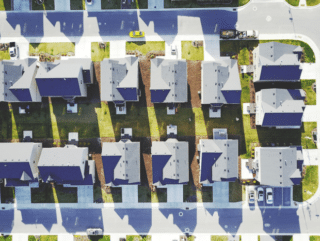
More Home Care & Wellness Products Articles
The Silent Killer that May Be Lurking in Your Home

Colorless, odorless, and tasteless, radon is a radioactive gas that cannot be detected by human senses. Prolonged exposure to it is the second leading cause of lung cancer in the US, as well as the leading cause of lung cancer in non-smokers.
To make matters worse, children may be particularly vulnerable to the adverse health effects of radon gas because their different lung shape, size, and breathing rates as compared with adults mean higher estimated radiation doses. And this menace may be present in your home.
The good news is that radon-induced lung cancer is preventable. Prevention starts by testing the radon levels in your home and taking measures to lower the concentration.
A deadly threat
Radon is produced from the radioactive breakdown of the uranium and radium found in most rocks and soils. As it deteriorates further, it emits atomic particles into the air that, once inhaled, can be deposited in our lungs.
The alpha energy associated with these particles can alter cell DNA, which increases the risk of lung cancer. According to the US Environmental Protection Agency, radon causes about 21,000 deaths in the US annually.
Numerous research projects have documented the risk of lung cancer from radon. As the World Health Organization states, “Studies in Europe, North America and China have confirmed that even low concentrations of radon – such as those commonly found in residential settings – also pose health risks and contribute to the occurrence of lung cancers worldwide.”
Since the half-life of radium is 1,620 years, it is a perpetual generator of this carcinogenic gas.
Where radon gathers
When radon is released into the air outdoors, it rapidly spreads out and dilutes, which takes care of the problem. When found indoors, however, it becomes a different story.
Radon can be drawn into buildings through cracks in their foundations, as well as through openings around cables or pipes. Even drains provide a gateway for radon to enter. The decreased ventilation of enclosed spaces means that the concentration of radon can build.
Moreover, the differences in air pressure between the inside of a building and the soil around it play an important role in radon entry. Since the air pressure indoors is usually lower than the surrounding soil, the house will act as a vacuum, sucking radon gas inside.
While radon levels tend to be higher closer to the ground, all homes below the third floor of a multi-family building are particularly at risk. For this reason, the EPA and the Surgeon General recommend testing all residences below the third floor for radon.
Keep in mind that radon levels vary considerably, even between adjacent buildings, since the factors that drive radon entry are unique to every structure. Soil permeability (i.e., how easily the gas can move through the soil), the amount of radium in the soil and rock surrounding the building, and the pressure difference between the indoor air and the soil below and around the building all dictate how much radon penetrates into a given building and where it goes.
New and old homes, well-sealed and drafty homes, and homes with or without basements can have a radon problem. It is not possible to make a reliable prediction of indoor radon without performing a test.
How to protect your family from radon
While single-use radon tests exist, constant monitoring over time is the surest way to know the extent of your exposure to radon. To track your indoor radon continuously in real time, purchase a reputable radon detector. These small devices can be found online or at some home improvement stores and are available at reasonable prices.
For instance, both the EcoBlu and EcoQube home monitors cost less than $160. No special knowledge or skill is required to install them, and they start delivering results in only 10 minutes. If radon levels suddenly spike, their sensors can respond rapidly enough to let you know immediately.
If your average concentration is at or above the EPA Action Level of 4 pCi/L, it can be ameliorated by a radon mitigation system. These should be installed by qualified radon mitigation contractors according to the regulations in your state. According to US News and World Report, “Radon mitigation typically costs between $778 and $1,223, but the cost can reach as much as $3,000 for a large home or property with multiple foundations.”
For peace of mind, protect your family against radon. Obtain a high-quality radon monitor and start putting it to use today.

















